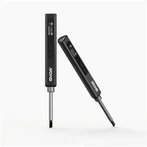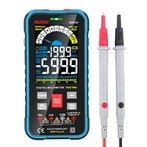Principles and use of dark-field microscopes
Dark field microscope (dark field microscope) of the focusing lens in the centre of the light-blocking sheet, so that the illumination light is not directly into the figure mirror, only allowed to be reflected by the specimen and diffracted light into the objective lens, so the field of view of the background is black, the edge of the object is bright. The use of this microscope can see microparticles as small as 4~200nm, the resolution can be 50 times higher than the ordinary microscope. The principle and use of dark-field microscope:
1, principle: dark field microscope is the use of Tyndall (Tyndall) the principle of optical effects, in the ordinary optical microscope structure based on the transformation. Dark-field concentrator, so that the central beam of the light source is blocked. It cannot pass through the specimen from the bottom up into the objective lens. Thus, the light changes the pathway, tilted irradiation in the observation of the specimen, the specimen meets the light reflection or scattering, scattered light into the objective lens, so the whole field of view is dark.
2, scope of application: dark field microscope is often used to observe unstained transparent samples. These samples are not easy to see clearly under the general bright field of view because they have similar refractive indices to their surroundings, so the dark field of view is used to improve the contrast between the sample itself and the background. This kind of microscope can see microparticles as small as 4~200nm, and can only see the existence, movement and surface characteristics of the object, but cannot identify the fine structure of the object.
3,Method of use
(1) Attach the dark field spotter to the spotter holder of the microscope.
(2) Choose a strong light source but prevent direct light from entering the objective lens, so it is usually illuminated by a microscope lamp.
(3) A drop of cedar oil should be added between the concentrator and the specimen slice, in order not to make the illumination light in the concentrator above the total reflection, can not reach the examined object, and do not get the dark field illumination.
(4) Lift and lower the light collector, the focus of the light collector mirror to the object being examined, that is, the apex of the cone beam irradiation of the object being examined. If the condenser can be moved horizontally and a centre adjustment device is attached, centre adjustment should be carried out first so that the optical axis of the condenser and the optical axis of the microscope are strictly in a straight line.
(5) Select the objective lens corresponding to the concentrator and adjust the focal length to find the object to be observed.






